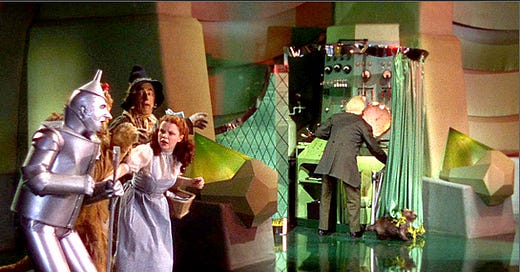About the author: Tim Hartman is Associate Professor of Theology at Columbia Theological Seminary. He is the author of two books: Theology after Colonization: Kwame Bediako, Karl Barth, and the future of theological reflection (University of Notre Dame Press, 2020) and Kwame Bediako: African Theology for a World Christianity (Fortress Press, 2022/Langham Publications, 2021). He is an ordained minister in the Presbyterian Church (USA). His scholarly interests include: contemporary Christian theologies worldwide, Christology, Lived Theology, Election/Predestination, antiracist theologies, ecclesiology, postcolonial mission, and the work of Karl Barth, Kwame Bediako, Dietrich Bonhoeffer, and James Cone.
Karl Barth is well known for his objections to a Deus absconditus (Latin for “hidden God”). Deus absconditus refers to the theological concept that the essence of God is fundamentally unknowable—or, a God behind God. Barth was insistent that the only way to know who God is, is through the self-revelation of God in Jesus Christ. God is not hidden. God is revealed because God has revealed Godself in Jesus Christ. Barth refused to separate God and Jesus Christ; a charge he leveled against Calvin’s doctrine of predestination.1 For Barth, “God is faithful, and that in Jesus Christ we have His total and unique and therefore authentic revelation, the Word in which He does full justice both to Himself and us.”2 Barth made this argument both when speaking Christologically about Jesus Christ as the revelation of God and when articulating his understanding of the economic Trinity. In Barth’s words, “God is who He is in His works.”3 Put more colloquially: God is what God does. Roman Catholic theologian Karl Rahner famously built on Barth’s insights with what became called Rahner’s Rule: “the economic Trinity is the immanent Trinity, and the immanent Trinity is the economic Trinity.”4 We can know who God is (God’s character) because of how God acts towards us. There is no other God aside from the God that we know in Jesus Christ. Though God is a mystery, and we do not know exactly how God is Triune, God is not hidden because God has revealed Godself in Jesus Christ.
Every year when I teach Barth’s understanding of the Trinity, I consider how to help students understand what it means that “there is no God behind God.” In spite of Barth’s deep and well-founded mistrust of any analogy of the Trinity (for the Trinitarian relations, “there are no analogies”),5 I use an analogy to describe to my students what it means that we know God only because God has revealed Godself to us. I tell them that, “there is No Wizard behind the curtain,” asking them to recall the 1939 movie “The Wizard of Oz” where a teenage girl, Dorothy, and her cairn terrier, Toto, are whisked away from their home in Kansas to the faraway land of Oz. Dorothy learns that she must follow the yellow brick road to the Emerald City so that the Wizard who lives there can grant her wish to return home. Along the way, she picks up three traveling companions all wishing for their own dream to be granted: the Scarecrow, who wants a brain; the Tin Man, who wants a heart; and the Cowardly Lion, who wants courage.
This year over half of my class was born outside of the United States, and was not familiar with the film or its plot. In response to my attempt to explain Barth’s understanding of divine revelation through this film allusion, one student remarked: “Dr. Hartman, we do not know that of which you speak.” Then, through the conveniences of the internet and classroom technology, I quickly was able to show them this two minute clip from the “The Wizard of Oz.” I then had the joy of seeing these students watch the clip for the very first time. As Dorothy engages the big, powerful Wizard, reminding him to keep his promise and he warns her not to arouse his wrath, I saw the moment of comprehension when Toto pulls back the curtain and Dorothy confronts the Wizard. As the students watched Dorothy and her friends realize that “the Wizard” was not a big, green, scary creature, but instead a small, scared, old man who urged them to, “Pay no attention to that man behind the curtain,” I watched the students realize Barth’s point. There is only God; there is no “hidden God” pulling the strings of Jesus Christ or using Jesus Christ as merely an instrument or a mouthpiece of the real God. The God we know in Jesus Christ is the Triune God revealed. Our experiences of God are reliable. God is trustworthy. In every way that we have experienced the grace of God in our lives, that grace is real. It is not a false gift from the “real God” who is actually small and scared or mean and vindictive. The God that we encounter is the Living God—the One who is.
In this Advent season, when we celebrate God becoming human, entering our world as a child, Barth wrote, “[the]‘Incarnation of the Word’ asserts the presence of God in our World and as a member of this world, as a Man among men. It is thus God’s revelation to us, and our reconciliation with Him. That this revelation and reconciliation have already taken place is the content of the Christmas message.”6 We can know that the self-revelation of God in Jesus Christ truly is God-in-the-flesh. There is no (other) God hiding behind God. There is no Wizard behind the curtain.
Karl Barth, Church Dogmatics, 4 vols. in 13 pts, ed. G.W. Bromiley and T.F. Torrance (Edinburgh: T&T Clark, 1956–75), II/3, §33, 111.
Barth, CD IV/3, §69, 100.
Barth, CD II/1, §28, 260.
Karl Rahner, The Trinity (New York: Crossroad Pub, 1997 [1970]), 22.
Barth, CD I/1, §9, 364.
Barth, CD I/2, §15, 172-73.






